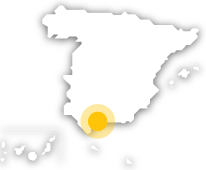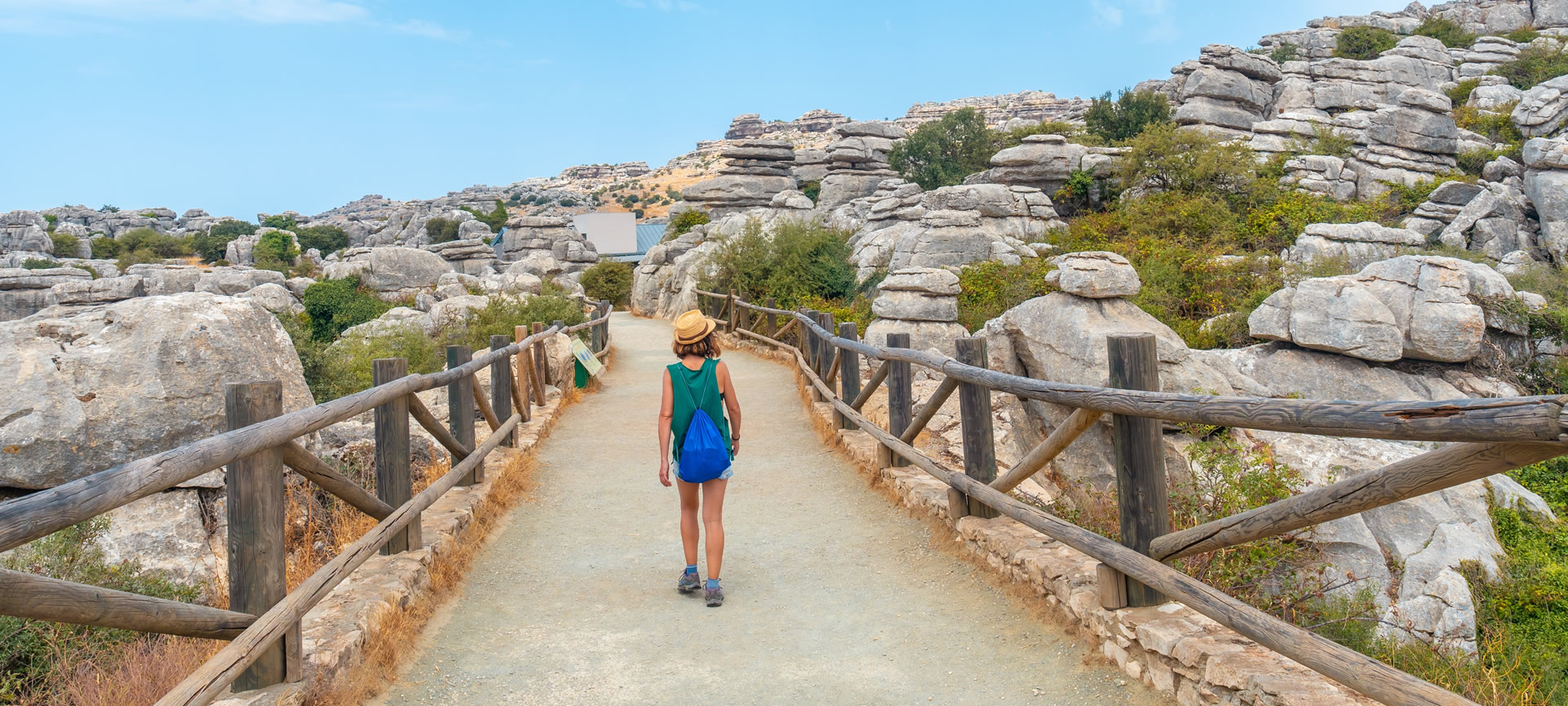
As well as having a beautiful and expansive coastline washed by the Mediterranean, Malaga is one of the most mountainous provinces in Spain. This magnificent combination allows you to plan routes and excursions of all kinds. You can explore the region's unique archaeological heritage, enjoy hiking and active tourism in its natural landscapes or relax in postcard-perfect towns.
Debe activar Javascript para poder utilizar este servicio
-
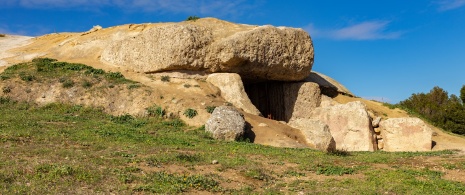
Antequera, a trip to prehistory
One of the can't-miss visits to immerse yourself in the historical heritage of this region of Andalusia is Antequera. Worthy of special mention is the famous archaeological site of the Dolmens, with the dolmen of Menga, the dolmen of Viera and the tholos of El Romeral, declared a World Heritage Site by UNESCO. Just 15 kilometres away you have the karst landscape of Torcal de Antequera, one of the best in Europe. It is more than 1,200 metres above sea level. To take in the whimsical shapes of its limestone rocks, you can follow the marked hiking routes, of low and medium difficulty, on your own or by requesting a guided tour at the visitor centre.About 40 kilometres from Antequera is the Caminito del Rey, another of the most incredible landscapes in the mountains of Malaga. It is located in the Gaitanes Gorge and is a steep canyon through which the Guadalhorce River flows, with a walkway about 100 metres high, only one metre wide and three kilometres long.
-
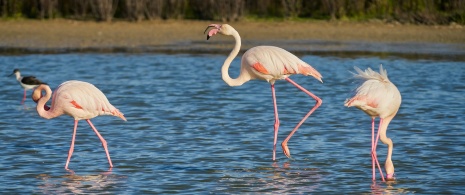
Fuente de Piedra Lagoon, large colony of flamingos
In the same region of Antequera is the Fuente de Piedra Lagoon Nature Reserve. It's the largest lagoon in Andalusia and an exceptional place for birdwatching, as it houses the largest colony of pink flamingos in the entire Iberian Peninsula. To learn about the rich biodiversity of this enclave, there are visits with expert guides adapted to all types of groups.
-
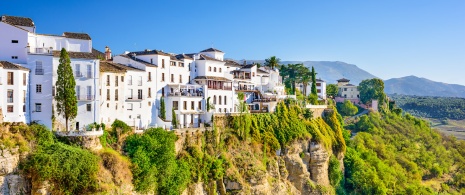
White towns of the Serranía de Ronda
The route of the white towns of Andalusia takes you through the provinces of Cadiz and Málaga. To visit those located in Malaga, you're best off starting with Ronda. Its New Bridge over the impressive Tajo de Ronda – a gorge of more than 150 metres – over the Guadalevín River that divides the town in two, is one of its main attractions, but not the only one. Some of the essential visits include the old citadel, the Gothic-Renaissance church of the Holy Spirit or Santa María la Mayor, the Arab Baths and the Archaeological Museum.Around the Serranía de Ronda, you will find other destinations that combine popular architecture with idyllic natural landscapes. This is the case of towns such as Algatocín, whose tiered profile blends in with the relief of the terrain and offers magnificent views; Gaucín, with its castle of El Águila located on the top of a hill at an altitude of almost 700 metres; or Casares, popularly known as the “hanging village” for the layout of its houses and its sloping streets.Further east, about 45 kilometres from Ronda, is Genalguacil, where the Genal Valley art encounters are held every two years, an event where the artwork is displayed in squares and on streets, turning the town into a veritable open-air museum. The Fernando Centeno López Museum of Contemporary Art houses a large part of the artwork produced during these encounters. In addition, Genalguacil has a Craft Centre whose objective is to promote the traditional work of local artisans.
-
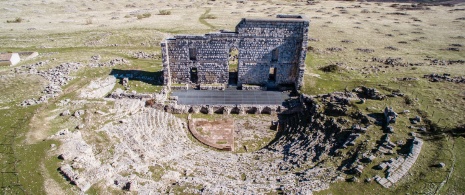
Pileta Cave and archaeological site of Acinipo
In Benaoján, another white village, is the Cueva de la Pileta, which contains one of the most fascinating cave paintings in Spain. These are extraordinary paintings of animals (goats, horses, buffalo and bison, as well as fish) found in a series of galleries located at different levels, with heights of up to 15 metres, and a large central nave.Plus, about 20 kilometres from Ronda is the archaeological site of the Roman city of Acinipo. Its theatre is one of the best preserved in Roman Hispania. You will also be able to see other features of the city, such as a stately dwelling and Roman baths, with its arena for gymnastic exercises. Its elevation, 1,000 metres above sea level, gave it a strategic location.
-
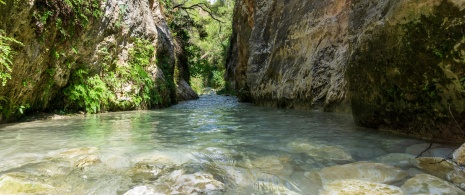
Eastern Malaga: The Chillar River and the Maro Cliffs
Traveling to the east of the province, to the charming Nerja, you can go on one of the best hiking excursions in Malaga: the Chillar river route. It is a gorge where the river flows down into pools and water channels. It is around 16 kilometres, round trip, and we recommend that beforehand you check out the official information for the possible restrictions there may be due to the weather.Another natural wonder of the area is the Maro cliffs. You will enjoy a beautiful landscape where a succession of small coves with crystal clear waters, such as the Cañuelo or the Doncella, mingle with the cliffs. The area is ideal for kayaking routes, paddlesurfing and scuba diving.
Travel plans for inspiring you
